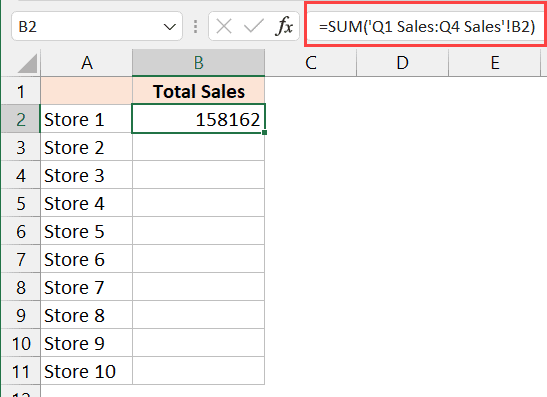5 Easy Ways to Reference Values in Excel Sheets

Excel is more than just a simple spreadsheet application; it's a powerful tool for data analysis, financial modeling, and project management. One of the key skills to master when working with Excel is effectively referencing values within sheets or across different sheets and workbooks. This knowledge not only increases efficiency but also ensures accuracy in data handling. In this blog post, we will delve into five straightforward methods to reference values in Excel, enabling you to leverage the full potential of this versatile software.
1. Direct Cell Reference

Direct cell referencing is the most basic and commonly used method to refer to data within the same sheet. Here’s how you do it:
- Click on the cell where you want to reference the value.
- Type the equals sign (=) followed by the cell address. For example, if you’re referencing cell C3, type
=C3.
Notes:

💡 Note: Direct references can be combined with arithmetic operations. For example, =A2+B2 adds the values of cells A2 and B2.
2. Using Named Ranges

Named ranges provide a more intuitive way to reference cells or ranges of cells by giving them meaningful names:
- Select the cell or range of cells you want to name.
- Go to Formulas tab, then Name Manager, or simply press
Ctrl+F3. - Click New, type a name for your range, and click OK.
- Now you can use this name in formulas or cells references, e.g.,
=MyRange.

3. Relative and Absolute Cell References

Excel uses three types of cell references: relative, absolute, and mixed:
- Relative References: These change when you copy a formula to another cell. They are the default reference type, e.g.,
=B3. - Absolute References: Fixed to a specific cell, using
</code> before row and column identifiers, e.g., <code>=B3</code>.</li> <li><strong>Mixed References:</strong> Either the row or the column is fixed, e.g., <code>=B3or$B3.
⚠️ Note: Understanding these references can prevent errors when copying formulas across large datasets.
4. Referencing Data from Other Sheets or Workbooks

Sometimes your data might be spread across different sheets or even workbooks:
- Reference from another sheet: Use the sheet name followed by an exclamation mark before the cell reference, e.g.,
‘Sheet2’!A1. - Reference from another workbook: Include the workbook name in square brackets before the sheet name, e.g.,
=[Book1.xlsx]Sheet1!A1.
5. 3D References

Excel also supports 3D references for referencing the same cell or range across multiple sheets:
- Click the cell where you want to insert the formula.
- Type the equals sign followed by the cell reference, then highlight the range of sheets you want to include, e.g.,
=SUM(Sheet1:Sheet3!A1).
Summary:

Throughout this post, we’ve explored various methods for referencing values in Excel, each with its unique applications:
- Direct Cell References for quick, simple references within the same sheet.
- Named Ranges for a more organized and intuitive approach to data management.
- Understanding Relative and Absolute References to manage formulas dynamically or statically.
- Using References from Other Sheets or Workbooks to integrate data across different parts of your project.
- Utilizing 3D References for summary calculations across multiple sheets.
Mastering these techniques will enhance your Excel proficiency, enabling you to work more efficiently with large datasets and complex models. Remember, the key to becoming an Excel expert is practice and understanding when to apply which method for optimal results.
What is the difference between a relative and an absolute reference?

+
Relative references adjust when a formula is copied or filled, moving relative to the new cell. Absolute references always point to a specific cell or range, regardless of where the formula is moved or copied.
Can you link data from different Excel files?

+
Yes, by referencing cells in external workbooks using their file name in square brackets, you can link data across different Excel files.
How do I use named ranges?

+
Define a named range by selecting the cells, going to the Formulas tab, selecting Name Manager, and then entering a name for the range. You can reference it by using the name in formulas.



